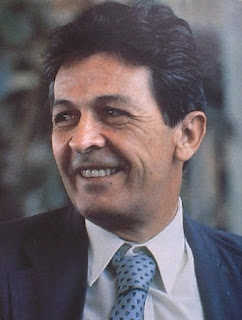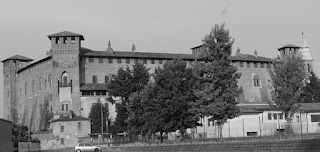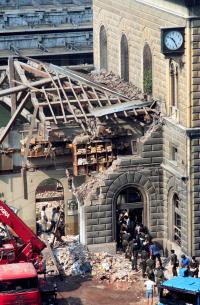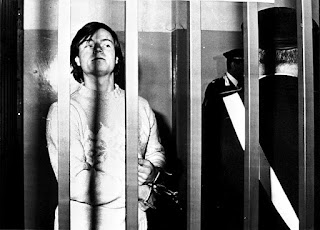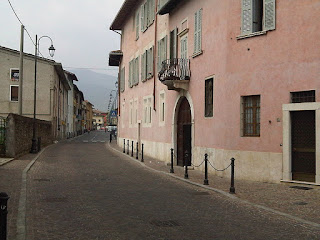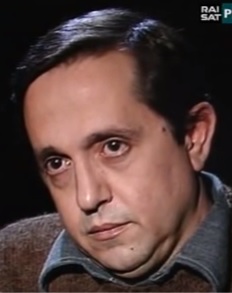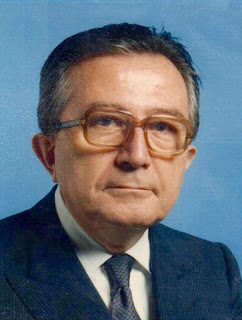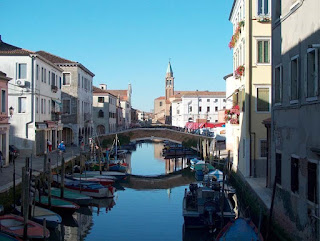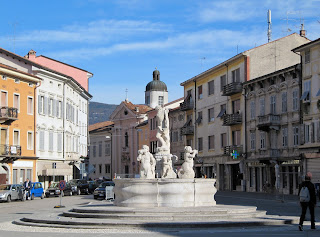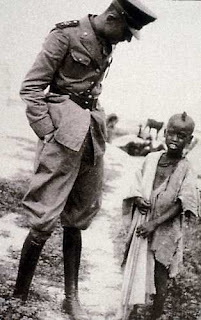How a terrorist and a mass murderer brought terror to streets of Milan
Milan citizens were left cowering in fear on this day in 1980 when police engaged in a prolonged shootout in the streets around San Vittore prison, which is situated less than three kilometres from the Duomo.
Corrado Alunni was the driving force
behind the San Vittore escape
It followed an escape from the 19th century institution organised jointly by the notorious criminal and mass killer Renato Vallanzasca and the Red Brigades terrorist Corrado Alunni.
Vallanzasca, the head of the Milanese crime gang Banda della Comasina, had been in jail for much of the last eight years and was serving a life sentence for his role in a number of kidnappings and armed robberies, which had resulted in the deaths of a number of police officers, bank staff and members of the public.
Alunni, who had been a member of both the Red Brigades and the Communist terror group Prima Linea, had been jailed in 1978 after his arrest following an armed attack on a carabinieri patrol in the city of Novara in Piedmont.
In the days leading up to their escape attempt, the two had managed to smuggle a number of firearms into the prison and discussed how they would force prison guards to open the gates.
The action began to unfold during an afternoon exercise session on Monday, 28 April. At about 1.15pm, Vallanzasca and Alunni, together with Vallanzasca’s gangland second-in-command, Antonio Colia, and 16 other prisoners, executed their plan.
.jpg) |
| Renato Vallanzasca was one of Milan's most notorious gangsters |
The three in the group carrying the smuggled-in weapons seized a senior prison officer, Romano Saccoccio, using him as a human shield as they walked towards the exit gates, shooting two guards who refused to give them the keys and taking their weapons as well.
Once outside, the escaping group scattered into the streets around the prison, situated on the Viale di Porta Vercellina, but apparently without much thought as to where they were going.
Police were quickly in pursuit and both Vallanzasca and Alunni were injured during fierce exchanges of fire. Alunni was shot in the stomach and Vallanzasca suffered a serious head wound. Six prisoners managed to shake off their pursuers, although it was only a short time before they were recaptured.
Alunni, who was 33 at the time, declared the escape attempt to be a success despite it ending so quickly.
“The essential thing was to be able to escape, overcoming all the barriers of men and structures,” he said. “Even if it ended badly, I must say that we won the first test.”
In subsequent trials over his terrorist activities, including those into the kidnapping and murder of the former prime minister, Aldo Moro, in 1978, Alunni accumulated more than 20 years in prison sentences. In 1987, for the first time, he expressed a will to disassociate himself with the armed political struggle that came to be known as The Years of Lead. He died in 2022 at the age of 74.
Vallanzasca, meanwhile, became a veteran of escape attempts, although none successful and at 72 years of age he remains in jail, having been sentenced during his criminal career to life imprisonment four times, along with other sentences adding up to 295 years.
Travel tip:
The San Vittore prison was
completed in 1879
The San Vittore prison, the official address of which is Piazza Gaetano Filangieri, was built between 1872 and 1879 in a post-unification project when it was deemed that Milan needed a new prison. At the time, its location was on the outskirts of the city but urban expansion in the 150 years since then means that it is now anything but, falling well within the circonvallazione interna, the city’s internal ring road. Designed by the engineer Francesco Lucca, the prison’s perimeter walls were originally built in medieval style, presumably in the hope of giving the building some aesthetic appeal, but have since been replaced with rather ugly concrete. Its inmates have ranged from the Marxist intellectual Antonio Gramsci, who was locked up during the Fascist era, to the Sicilian Mafia boss Salvatore ‘Totò’ Riina.
Travel tip:
The Basilica di Sant'Abrogio is
a short walk from San Vittore
A more conventional tourist attraction within a short walk of San Vittore is the Basilica di Sant'Ambrogio, in Piazza Sant’Ambrogio. It was originally built by Saint Ambrose, who is Milan’s patron saint, when he was bishop, on the site of an earlier Christian burial ground. After his remains were placed there, the church was named after him. It was rebuilt in the 11th century and further modified in the 15th century. Aurelius Ambrosius was born in 340, training as a lawyer before becoming Bishop of Milan. After his ordination he wrote about religion, composed hymns and music and was generous to the poor. His feast day is celebrated on 7 December each year.
Also on this day:
1400: The death of lawyer Baldus de Ubaldis
1876: The birth of car maker Nicola Romeo
1945: The death of Benito Mussolini


